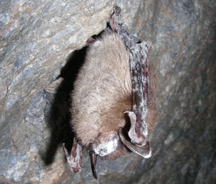 The article in the Pittsburgh Post Gazette seemed a little harsh, claiming that the Pennsylvania Game Commission caved to industry pressure when it abandoned its petition to list bat species that had been affected by white nose syndrome. A tiny bit of digging turned up the PGC press release, which pretty much admits to just that:
The article in the Pittsburgh Post Gazette seemed a little harsh, claiming that the Pennsylvania Game Commission caved to industry pressure when it abandoned its petition to list bat species that had been affected by white nose syndrome. A tiny bit of digging turned up the PGC press release, which pretty much admits to just that:
“Through this process, we heard from various wildlife organizations and representatives from the timber, oil, coal and gas industries, as well as legislators. At the present time, it is clear that more discussion, research and coordination need to be done on WNS and the other outside factors that are impacting our bat populations, as well as how we can craft solutions that protect bats without threatening the industries that employ thousands of Pennsylvanians.”
Read the PGC press release here.
Read the article in the Pittsburgh Post-Gazette here.
Read a press release from the Center for BioDiversity here.
Photo: little brown bat with white nose syndrome, courtesy of Missouri Dept. of Conservation




